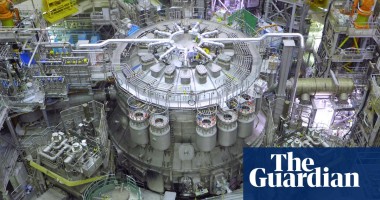World’s biggest experimental nuclear fusion reactor launched in Japan
Joint project with EU involves more than 500 scientists and engineers and more than 70 companies
The world’s biggest operational experimental nuclear fusion reactor – a technology in its infancy but billed by some as the answer to humanity’s future energy needs – has been inaugurated in Naka, Japan.
Fusion differs from fission, the technique used in nuclear power plants, by fusing two atomic nuclei instead of splitting one.
The goal of the JT-60SA reactor is to investigate the feasibility of fusion as a safe, large-scale and carbon-free source of net energy – with more energy generated than is put into producing it.
The six-storey-high machine, in a hangar in Naka, north of Tokyo, comprises a doughnut-shaped “tokamak” vessel set to contain swirling plasma heated up to 200mC (360mF).
It is a joint project between the European Union and Japan, and is the forerunner for its big brother in France, the under-construction International Thermonuclear Experimental Reactor (ITER).


Add comment